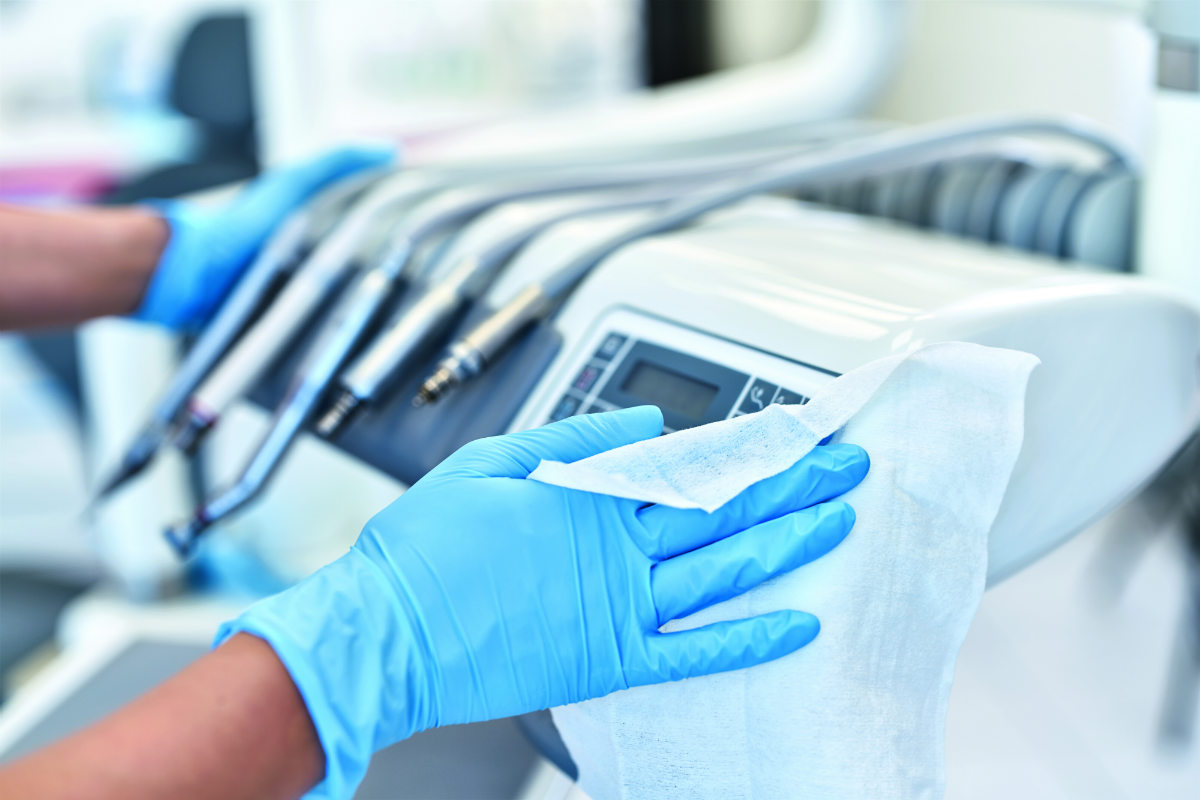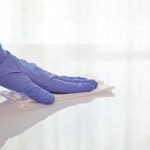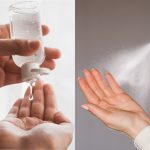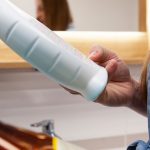
The disinfection means the use of physical or chemical means to remove, neutralise or destroy pathogens present on the surface of a medical object or device.
In medical and dental clinical environments in particular, the surfaces can become a breeding ground for micro-organisms and therefore constitute a means of transmission of pathologies.
Most of the pathogens transferred from a contaminated surface to a patient and vice versa can take place indirectly through the contaminated gloves of practice staff and/or direct contact by the patient with contaminated surfaces.
Safeguarding the health of practice staff and that of patients is an essential prerequisite before embarking upon any dental treatment. To guarantee this, it is vital that the practice staff perform daily disinfection and sterilisation procedures and protocols.
Surfaces inside a dental practice can be divided into clinical and non-clinical contact surfaces. The latter comprise flooring, walls, washbasins, etc. Clinical contact surfaces on the other hand are all those surfaces which may come into direct contact with the patient during dental procedures.
Clinical surfaces should always be covered by protective barriers in order to prevent contamination through aerosols and/or direct contact (e.g. contact between a contaminated glove and the surface). At the end of patient treatment, the films should always be removed from the surfaces, which must undergo disinfection procedures, and be replaced with new films.
Surface disinfectants used in dentistry should guarantee the same standards as those used in hospitals. It is therefore possible to identify certain characteristics of a good disinfectant:
- Bactericidal, Fungicidal, Tubercolicidal and Virucidal activity
- tested in accordance with European Norms (EN) and active in the presence of dirt
- compatibility with the surfaces they come into contact with
- easy to use
- limited contact time to guarantee effect
- good shelf life
For proper surfaces disinfection, products such as sprays, foams and wipes soaked in disinfectant can be used.
Generally, wipes soaked in disinfectant prove more convenient and immediate in their use, while sprays require a paper towel for application. In the case of alcohol-based spray products, it is always useful to avoid spraying these directly onto the surface to be treated but instead use a paper towel and first test the compatibility of the solution with a small portion of the surface. Alcohol-free products on the other hand have usage limits and usually offer improved safety for the user.
In the case of Zhermack disinfectant products, the range includes two alcohol-based products, one spray and soaked wipes recommended for surface resistant to the effect of this solvent. If on the other hand you need to disinfect “delicate” surfaces, there are two valid alternatives: one foam spray and some completely alcohol-free wipes.
Every surface should therefore be treated with proper care and using appropriate products to maintain high safety standards as well as the clinical quality offered to patients.
Do you want more information on Zhermack Dental products and solutions?
Contact us



 Zhermack SpA has been one of the most important producers and international distributors of alginates, gypsums and silicone compounds for the dental sector for over 40 years. It has also developed solutions for the industrial and wellbeing sectors.
Zhermack SpA - Via Bovazecchino, 100 - 45021 Badia Polesine (RO), Italy.
Zhermack SpA has been one of the most important producers and international distributors of alginates, gypsums and silicone compounds for the dental sector for over 40 years. It has also developed solutions for the industrial and wellbeing sectors.
Zhermack SpA - Via Bovazecchino, 100 - 45021 Badia Polesine (RO), Italy.


